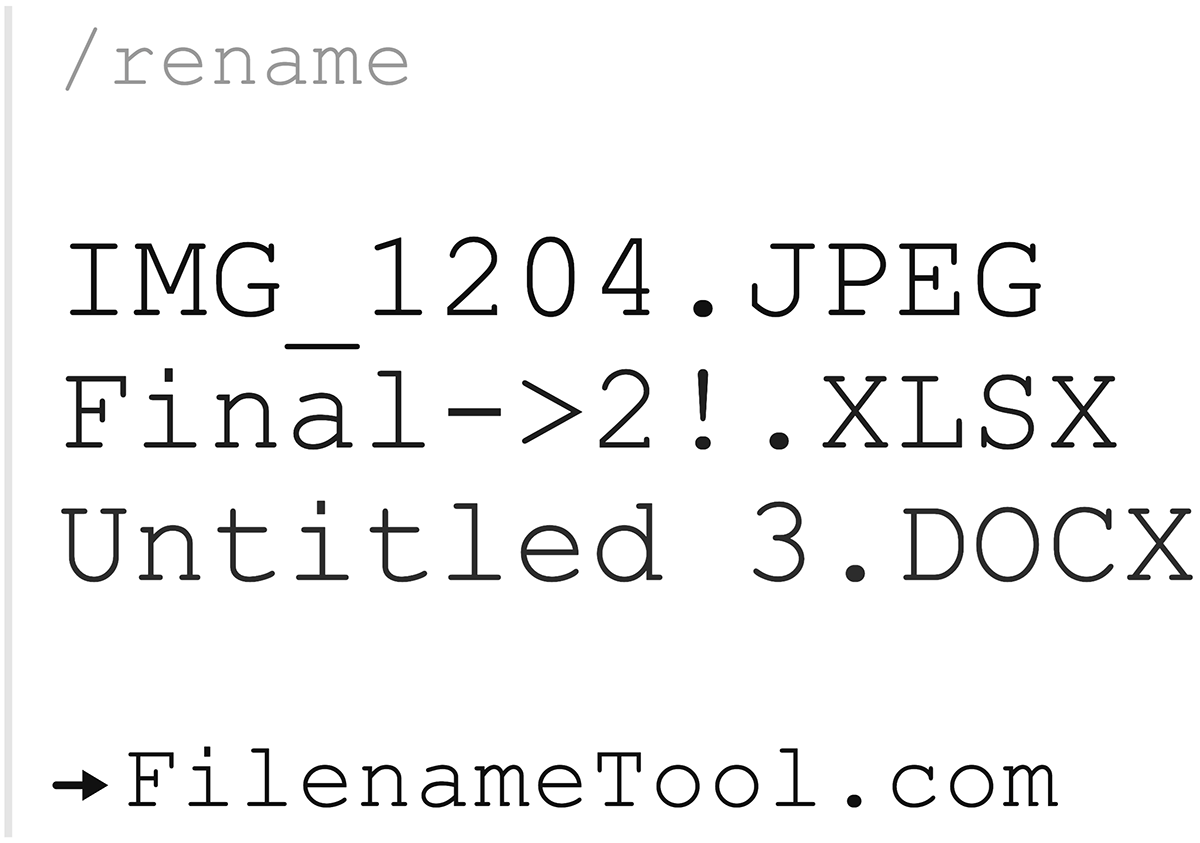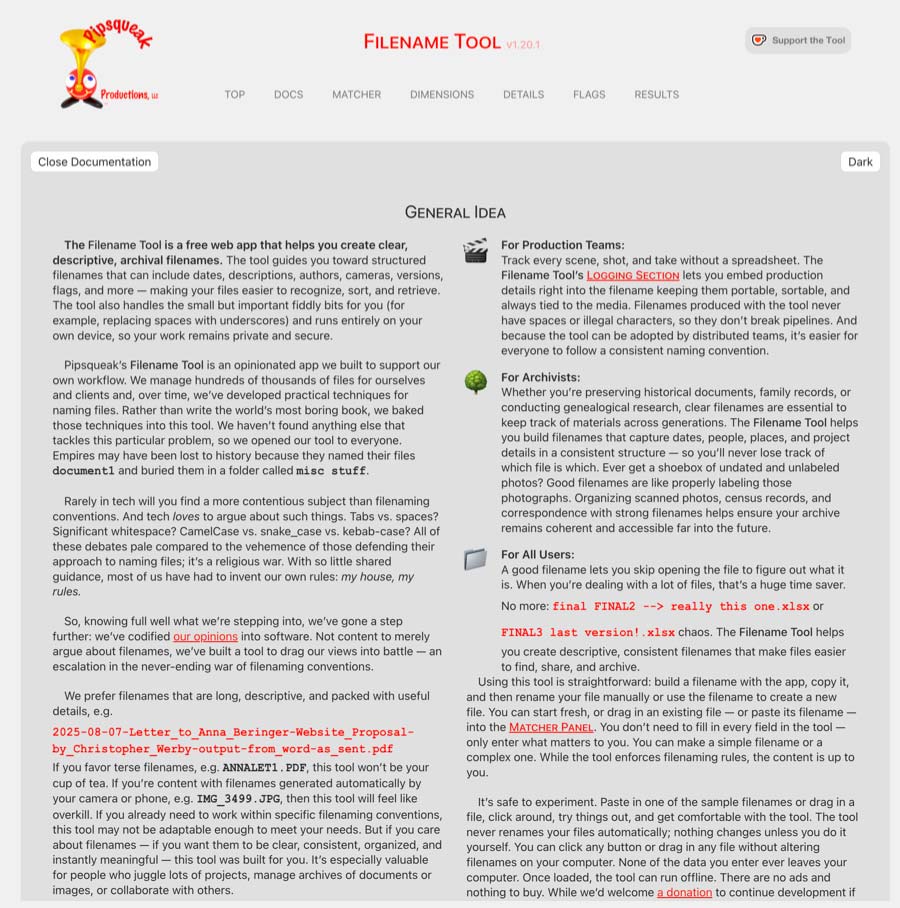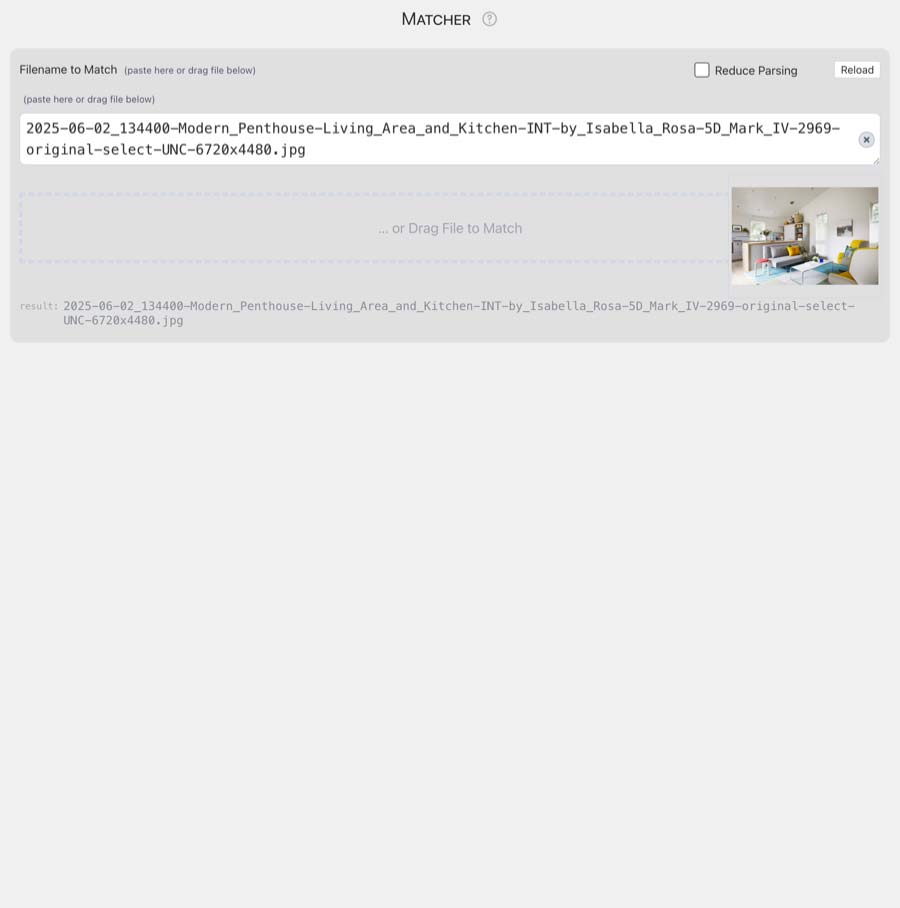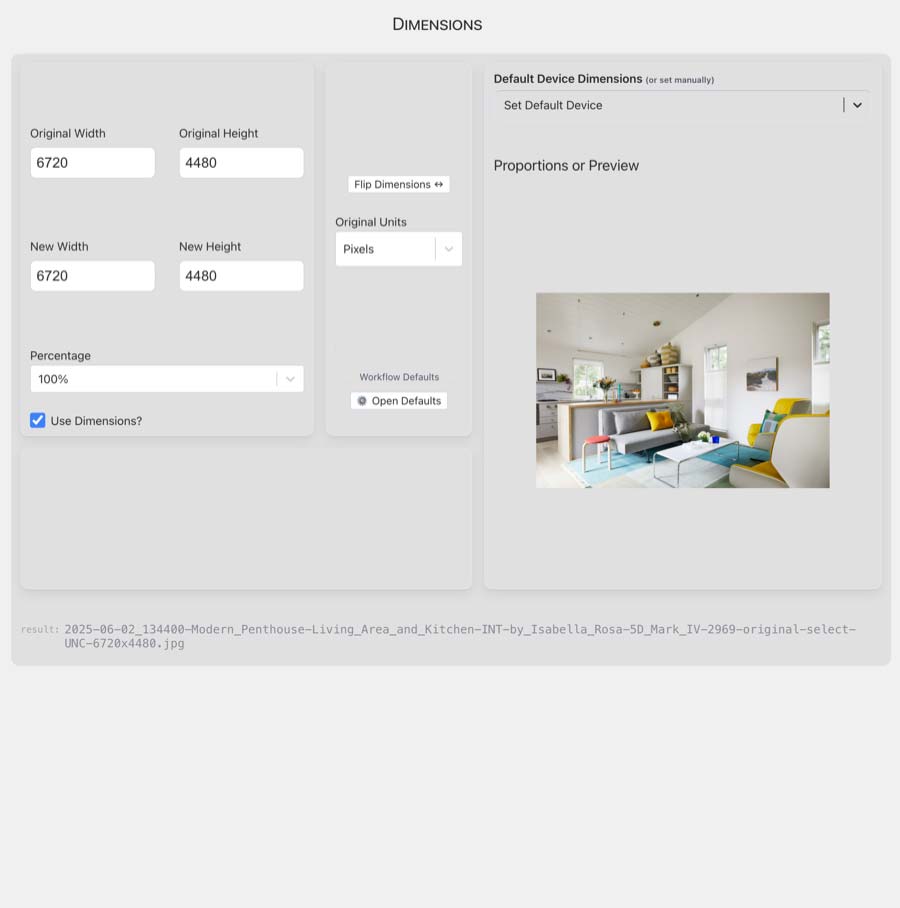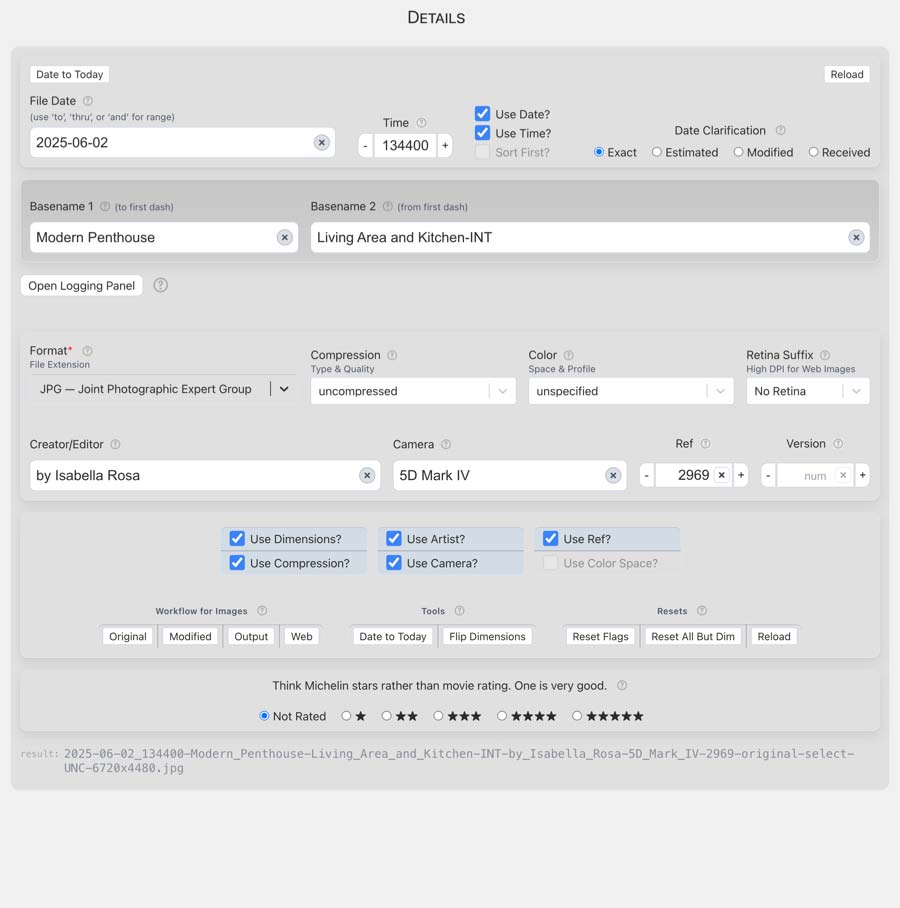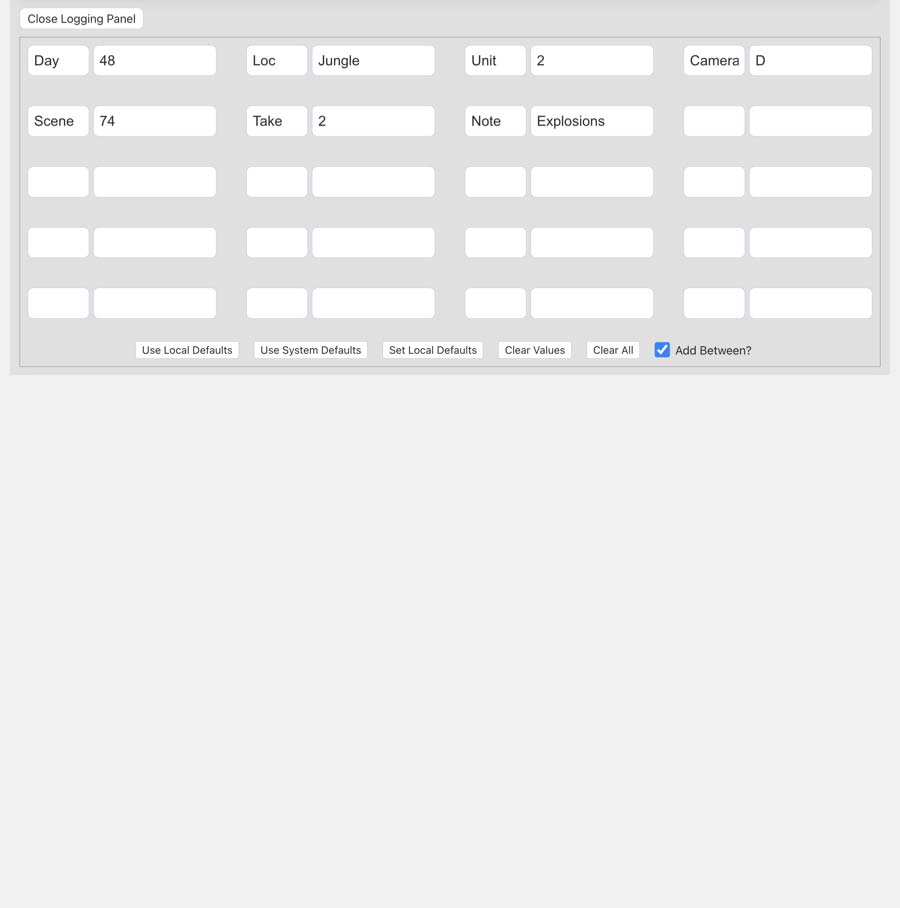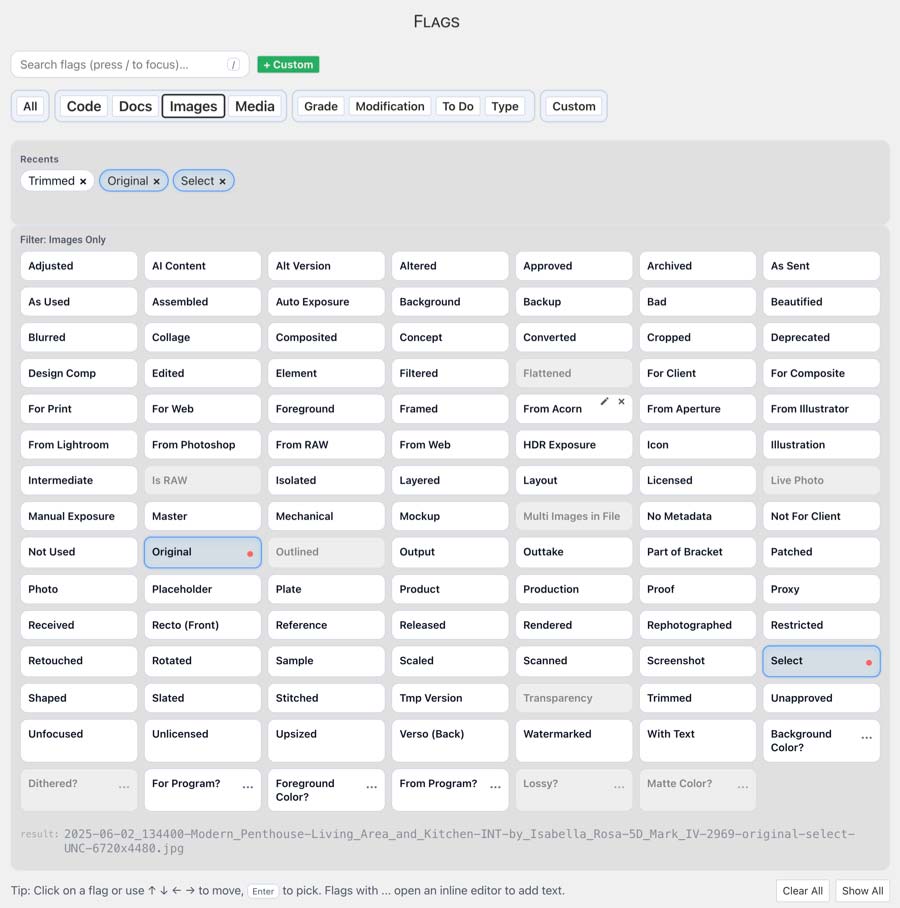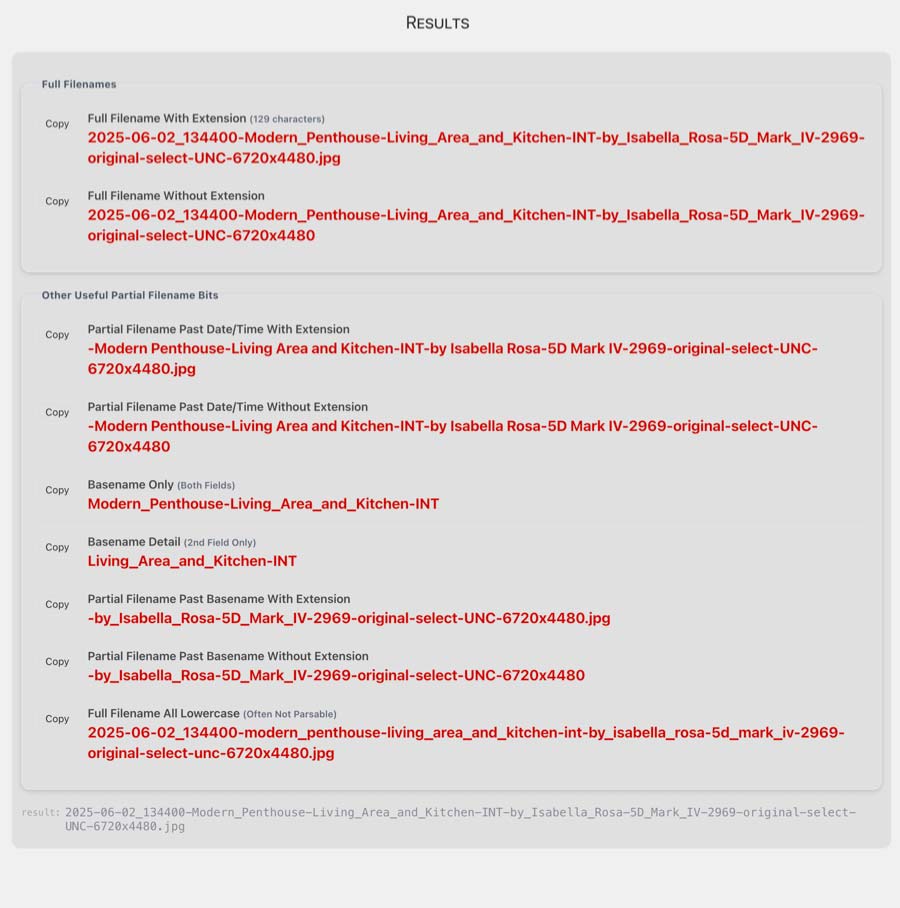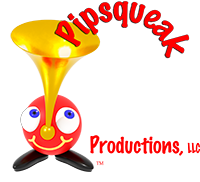Filename Tool was built to solve a quiet but persistent problem: how to name digital files clearly, consistently, safely, and for the ages. Whether in film or digital production, photography, writing, or research, files accumulate quickly — and an idiosyncratic filename that made sense at the time can become opaque a year later. This tool was designed to make structured consistent naming simple, intentional, and repeatable.
Filenames shouldn’t be an afterthought, instead think of them as metadata: small but powerful carriers of meaning that can outlast folders, tags, or database entries because they’re always attached to the file. At its core, Filename Tool is a kind of language system — one that turns dates, subjects, and context into durable, human-readable identifiers. Its interface helps users build filenames step by step, showing each addition to the filename as they go.
The tool’s interface is tuned to its function. Complex combinations of rules, flags, and formats are presented through a clean, responsive design that encourages experimentation while keeping the structure visible. And iterative naming is supported; it’s trivially easy to drag a file back into the tool to make a change. And nothing locks you into the tool. You can make changes to filenames the way you always have, if you wish. The result is an unusually direct workflow: you can craft exactly what your filenames convey within your system in a consistent predictable fashion.
Behind the interface, the logic is carefully layered. Each component of a filename — date, sort value, subject, author, or note — follows consistent parsing and validation patterns. This allows the tool to anticipate errors, flag ambiguities, and preserve uniformity across large sets of files. It’s not just a generator, but a validator — one that balances flexibility within a consistent naming scheme.
The tool includes extensive documentation that stays out of your way until you need it. It explains not only how to use the tool but why naming matters. The philosophy behind it extends beyond any one project: names are part of how we think about our work. When they’re structured thoughtfully, they make collections searchable, collaborations smoother, and archives more durable.
You can try the tool yourself, or read its documentation, at filenametool.com. It’s completely free — no ads, no subscriptions, nothing to buy — just a tool built to make naming easier.
For Pipsqueak, Filename Tool represents an ideal: software that does one thing carefully, with depth and consideration. Every element, from its text parsing engine to its visual layout, is built to reward care — a small, precise tool for working neatly in the digital age.
